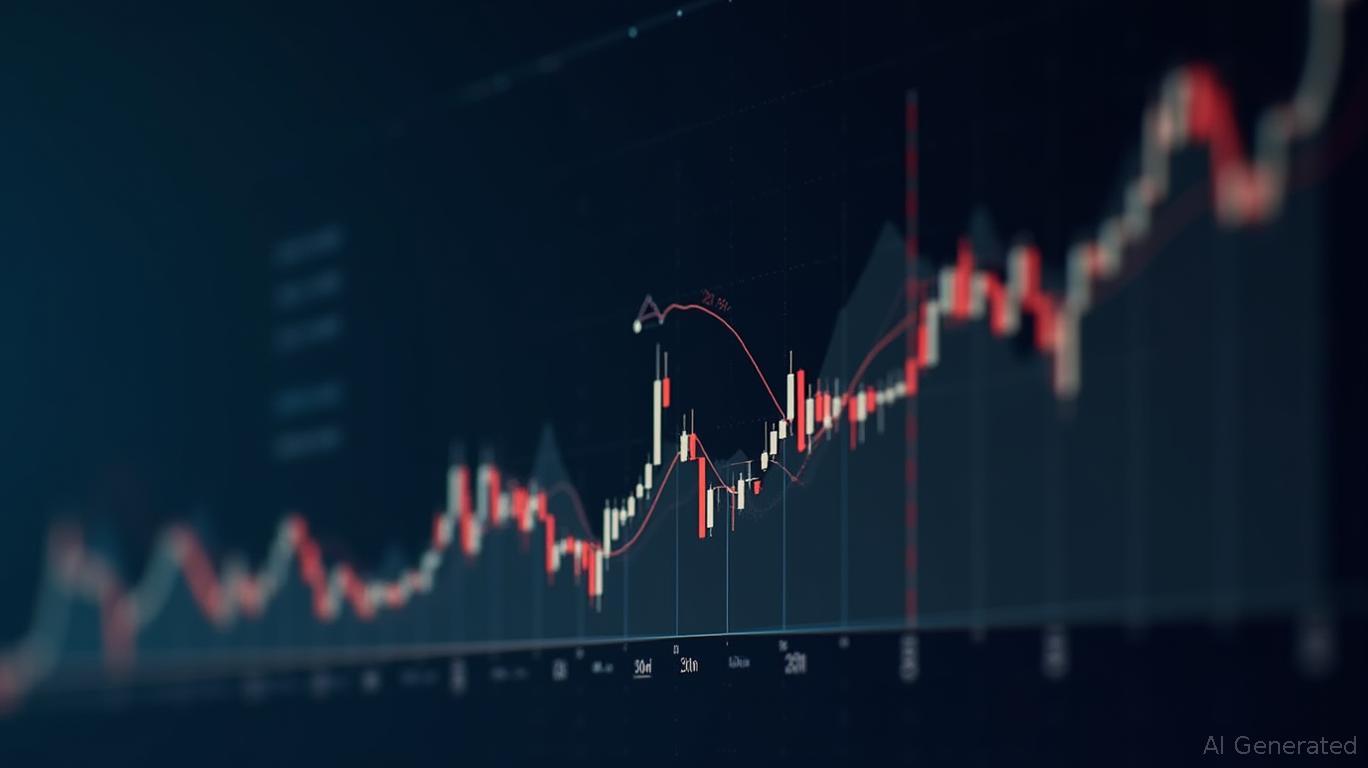MBBB: Capturing High Yield in a Volatile Market with Moody's Analytics-Powered Safety
The bond market in 2025 is a battleground of yield and risk. With the Federal Reserve maintaining its “higher-for-longer” rate stance and BBB-rated corporate bonds perched on the edge of downgrade to junk status, investors face a conundrum: how to secure income without overexposure to credit or interest rate risk. Enter the VanEck Vectors Moody's Analytics BBB Corporate Bond ETF (MBBB), a fund engineered to navigate this precarious environment. With a 4.86% forward yield, consistent monthly distributions, and a defensive tilt toward BBB-rated bonds with lower downgrade risk, MBBB offers a compelling strategy for income seekers. Let's dissect its appeal—and its risks—in detail.

Why BBB Bonds Matter in 2025
BBB-rated bonds sit at the intersection of yield and safety. They offer a premium over higher-rated corporate debt but remain within investment-grade territory—a sweet spot for investors seeking income without the volatility of junk bonds. However, this category faces heightened scrutiny. Analysts predict up to $60 billion in BBB bonds could be downgraded to high yield in 2025, driven by corporate debt strains and macroeconomic pressures. This creates two opportunities:
1. Yield upside from BBB bonds' premium over AA/A-rated peers.
2. Risk mitigation through active selection of BBB bonds least likely to fall into junk status.
This is where Moody's Analytics comes in. The fund's namesake partnership leverages
credit models to identify BBB-rated bonds with attractive valuations and strong fundamentals, filtering out candidates at high risk of downgrade. This is critical, as even a single downgrade can trigger forced selling by institutional investors, causing temporary price dislocations.The Case for MBBB: Yield, Stability, and Defensive Tactics
1. A 4.86% Forward Yield in a Low-Yield World
The 4.86% forward yield of MBBB (as of Q2 2025) outpaces the 3.7% yield of the broader investment-grade corporate bond market. This premium stems from the fund's focus on BBB-rated bonds, which typically carry higher coupons to compensate for credit risk. However, MBBB's Moody's-backed credit screening ensures it avoids the weakest issuers, aiming to balance income with safety.
2. Monthly Distributions: Consistency Amid Volatility
MBBB's monthly distributions provide steady income flow, a rarity in bond ETFs that typically pay quarterly. The fund's recent distribution stability is notable: as of May 2025, distributions have remained unchanged for six consecutive months, reflecting disciplined portfolio management. While other bond funds face pressure to return capital (as seen in funds like BBN), MBBB's focus on high-quality BBB bonds reduces reliance on return-of-capital tactics.
3. Defensive Positioning in a Rising Rate Environment
Interest rates are a double-edged sword for bond investors. MBBB's duration of 5.3 years (as of Q2 2025) means it's moderately sensitive to rate hikes. However, the fund's yield compensates for this risk: its yield-to-worst (YTW) of 9.9% (driven by curated bond selection) offers a cushion against rising rates. Additionally, the fund's exposure to BBB-rated bonds with floating-rate structures—common in sectors like energy and industrials—adds flexibility in a variable-rate environment.
Risks to Consider: BBB's Fragile Balance
No investment is without risk. MBBB's strategy hinges on two critical assumptions:
1. Downgrade Avoidance: If the predicted surge in BBB-to-junk downgrades materializes, MBBB's portfolio could face forced sales and spread widening. Moody's models are no guarantee, and macroeconomic shocks (e.g., a recession) could strain even well-screened issuers.
2. Interest Rate Sensitivity: A prolonged rate hike cycle or a sudden spike in yields could depress bond prices, offsetting MBBB's income advantage.
Mitigating Risks: Why the Fund is Still Worth Considering
- Quality Over Quantity: MBBB avoids the “fallen angels” already in high-yield territory, focusing on BBB bonds with strong cash flows and manageable debt levels.
- Diversification: The fund's holdings span industries like energy, industrials, and utilities, reducing reliance on any single sector's credit health.
- Active Management: Unlike passive ETFs tracking broad indices, MBBB's active strategy allows rapid adjustments to downgrade risks or rate shifts.
Conclusion: MBBB as a Core Income Play in 2025
The VanEck Vectors Moody's Analytics BBB Corporate Bond ETF (MBBB) is not a get-rich-quick scheme. It is, however, a strategic core holding for investors seeking:
- Income: A 4.86% yield in an era of low bond returns.
- Safety: Moody's analytics-backed screening to avoid downgrade casualties.
- Defensiveness: A diversified portfolio designed to weather rate hikes and credit cycles.
While risks like interest rate sensitivity and credit downgrades loom, MBBB's blend of yield, monthly distributions, and active management makes it a standout option. Act now—before BBB bonds' premium shrinks or downgrade fears destabilize the market.
In a world where yield is scarce and safety is hard to find, MBBB offers a disciplined path forward. The question isn't whether to invest—it's whether you can afford to wait.
Disclaimer: Past performance does not guarantee future results. Investors should conduct their own research and consult a financial advisor before making investment decisions.

Comments
No comments yet